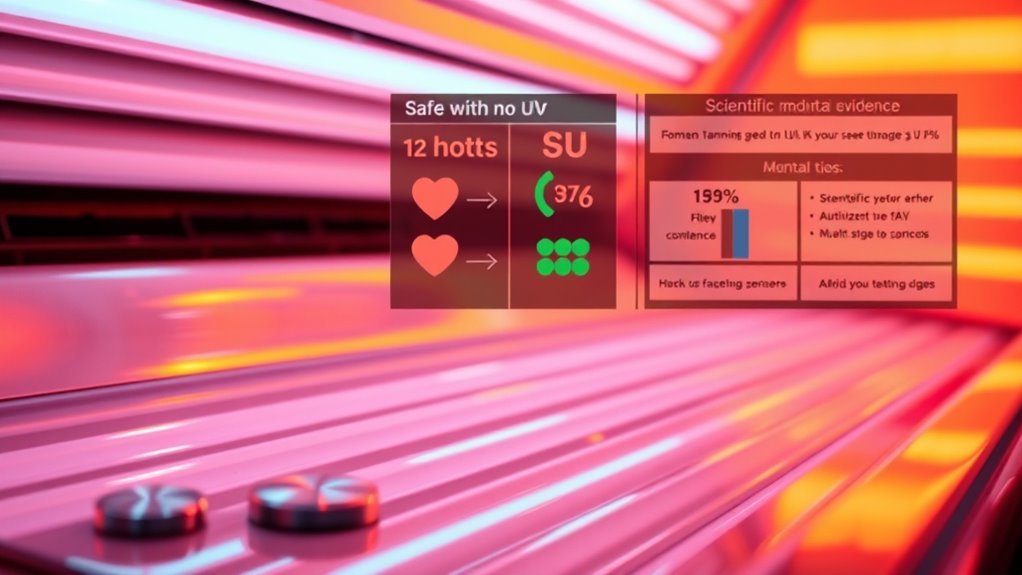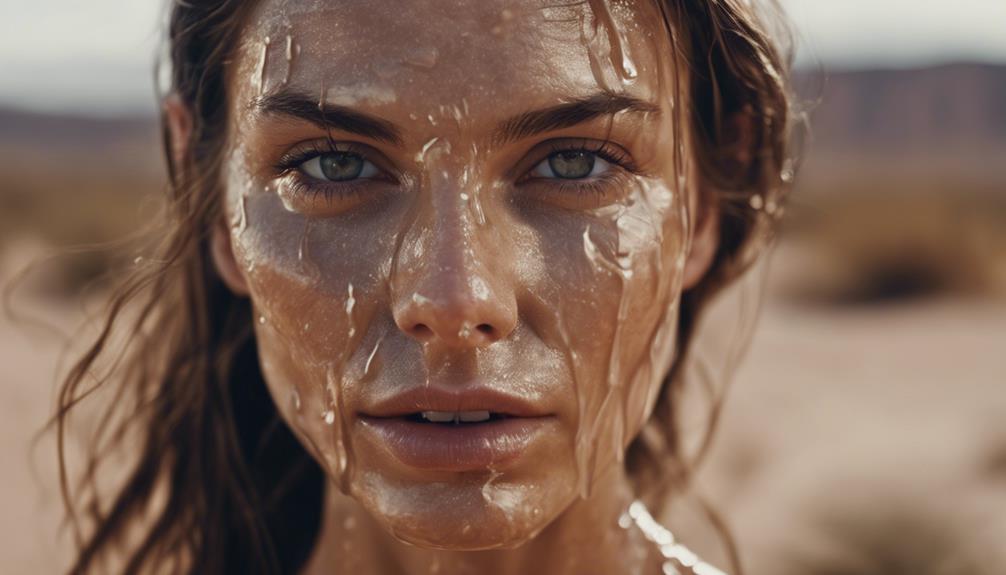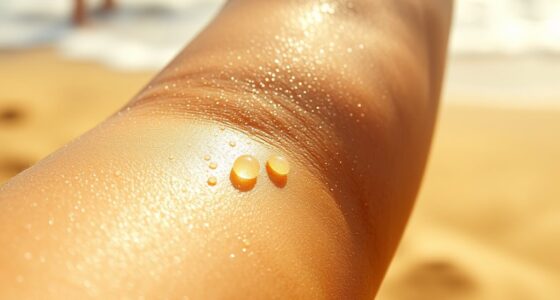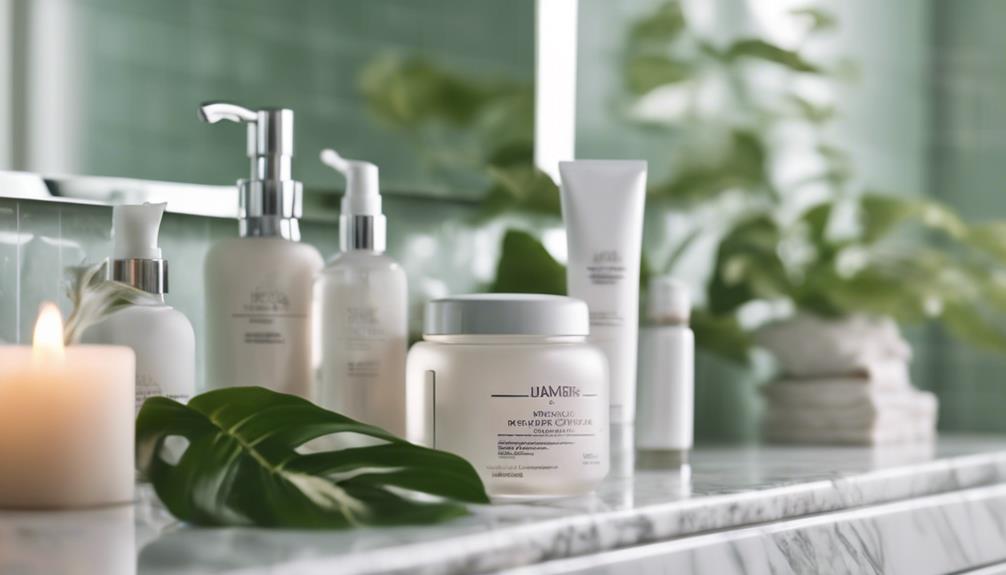Many believe tanning beds are safe and a good way to get a quick tan, but scientific evidence shows otherwise. Tanning beds emit UV radiation that damages your skin, increasing the risk of premature aging and deadly skin cancers like melanoma. They don’t really boost vitamin D production and can cause burns and long-term skin harm. If you’re curious about the real facts and health risks, keep going to learn more behind these common myths.
Key Takeaways
- Tanning beds are often falsely believed to be safe; however, they emit harmful UV radiation that damages skin and increases cancer risk.
- Many assume tanning beds boost vitamin D; in reality, they mainly emit UVA rays, which are ineffective for vitamin D production.
- Immediate skin damage like burns and long-term effects like wrinkles occur from tanning beds, despite perceptions of safety.
- The myth that indoor tanning is safer than sunbathing is false; tanning beds can emit stronger UV rays than natural sunlight.
- Risks such as skin cancer and premature aging outweigh any perceived benefits, with scientific evidence linking tanning beds to serious health issues.

Many people believe that tanning beds are a safe way to get a sun-kissed glow, but this is a common misconception. While you might think that indoor tanning is a controlled, safer alternative to sunbathing, the reality is quite different. Tanning beds emit ultraviolet (UV) radiation, which directly affects your skin’s pigmentation and overall health. Skin pigmentation, or how your skin responds to UV exposure, might seem harmless, but excessive UV exposure from tanning beds accelerates skin aging and increases your risk of skin cancer. The more you expose your skin to UV rays, the more your skin produces melanin, which gives you that tan, but this process also damages skin cells and can cause long-term harm.
Many believe that tanning beds are a reliable way to boost vitamin D levels, but that’s not entirely true. Vitamin D is crucial for bone health, immune function, and overall well-being, and the skin naturally produces it when exposed to sunlight. However, tanning beds are not a safe or effective source of vitamin D. They primarily emit UVA rays, which penetrate deep into the skin and contribute to premature aging and skin damage, rather than aiding your body’s vitamin D synthesis. If you’re seeking to increase your vitamin D, it’s safer to get moderate sun exposure or consider dietary supplements rather than relying on tanning beds, which pose substantial health risks.
People often think using indoor tanning beds is a quick fix for a tan without the harmful effects of sunburn. However, the UV radiation from tanning beds can cause immediate skin damage, including burns, and over time, leads to photoaging—wrinkles, age spots, and loss of skin elasticity. These effects are a clear sign that your skin is under stress from UV exposure, even if you don’t see an immediate tan or burn. Moreover, the misconception that indoor tanning is “safer” because it’s done indoors is false. The intensity of UV rays from tanning beds can be much higher than natural sunlight, and repeated exposure greatly raises your risk of developing melanoma, the deadliest form of skin cancer.
Frequently Asked Questions
Can Tanning Beds Help Treat Certain Skin Conditions?
Tanning beds can sometimes help treat certain skin conditions through ultraviolet therapy. You might find UV light beneficial for skin lesion treatment, especially for conditions like psoriasis or vitiligo. However, it’s crucial to consult a healthcare professional first, as improper use can cause damage or worsen your skin issues. Always follow medical advice and avoid self-treating with tanning beds, since safe and effective treatments are available.
Are There Safe Tanning Practices for Teenagers?
Like steering a river with hidden rocks, safe tanning practices for teenagers require careful awareness. You should prioritize sunless options like self-tanning lotions, avoid tanning beds altogether, and use high SPF sunscreen outdoors. Teenager awareness and youth education are crucial in guiding safe choices, helping you understand the risks of UV exposure. By making informed decisions, you protect your skin’s health and enjoy a healthy glow without unnecessary danger.
How Does Tanning Bed Exposure Affect Vitamin D Levels?
Tanning bed exposure can temporarily boost your vitamin D synthesis because UV rays stimulate its production in your skin. However, the UV exposure effects are risky, increasing your chances of skin damage and cancer. Instead of relying on tanning beds, you should get safe vitamin D from natural sunlight or supplements. Remember, the short-term benefits don’t outweigh the long-term health risks associated with UV exposure effects.
Is There a Way to Tan Safely Without Health Risks?
Yes, you can tan safely by limiting UV exposure and understanding your skin pigmentation. Use sun protection like broad-spectrum sunscreen, wear protective clothing, and avoid peak sunlight hours. Gradually build up your tan, giving your skin time to adapt. Remember, darker skin pigmentation offers some natural protection, but it doesn’t eliminate risks. Always prioritize your skin’s health, and consult a dermatologist for personalized advice on safe tanning practices.
Do Tanning Beds Cause Immediate Skin Damage or Only Long-Term Effects?
Tanning beds can cause both immediate skin damage and long-term effects. The UV exposure from tanning beds damages your skin cells instantly, leading to redness, burns, and irritation. Over time, this UV exposure accelerates skin aging, causing wrinkles, age spots, and loss of elasticity. Even if you don’t see immediate damage, repeated use increases your risk of skin cancer. Always protect your skin from excessive UV exposure to avoid these harmful effects.
Conclusion
Despite common myths, tanning beds aren’t safe. Scientific evidence shows that just one session increases your skin cancer risk by 20%. Imagine that: a single visit could boost your risk so markedly, yet millions still believe it’s harmless. Don’t be fooled by myths—your skin’s health is worth more than a fleeting tan. Stay informed, protect yourself, and choose safer ways to get your glow. Your future self will thank you.









